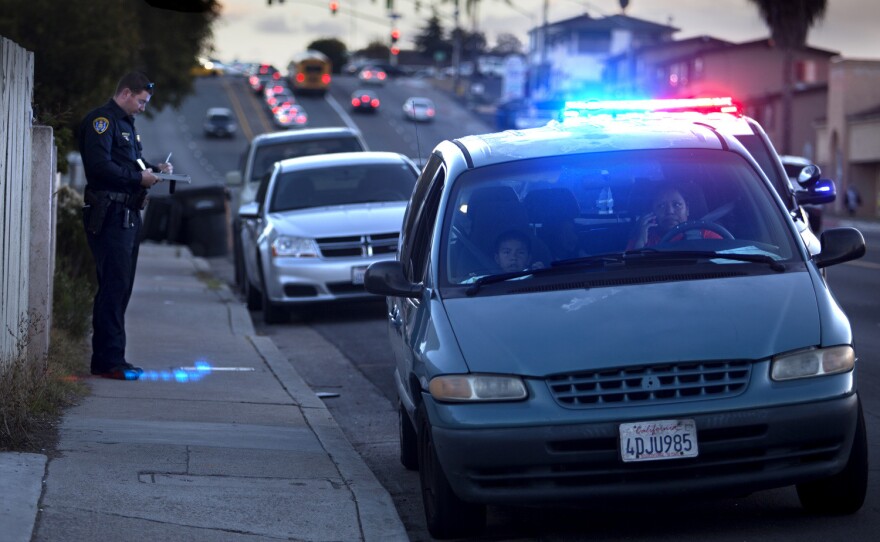The New York Times has now corrected an article calling into question the San Diego Police Department's use of facial recognition technology.
San Diego police have 89 electronic tablets with facial recognition software. The story suggested officers were using them without cause and lacked proper training and policies to prevent their misuse.
Police spokesman Scott Wahl said the department followed guidelines from the county, which began using facial recognition in 2013, before adopting its own policy in June. That policy says officers can only use the technology if they've lawfully detained someone and can't otherwise confirm their identity.
"We can take a picture of you, and if you have been arrested in San Diego County, your booking photo will be in the database and we can identify who you are out in the field, versus having to be fingerprinted downtown," Wahl said.
The policy also requires officers to delete the photos when they're done comparing them to the Sheriff's database.
The Times report drew on two San Diego incidents.
When Aaron Harvey was stopped by the police here in 2013 while driving near his grandmother’s house, an officer not only searched his car, he said, but also took his photograph and ran it through the software to try to confirm his identity and determine whether he had a criminal record.
Eric Hanson, a retired firefighter, had a similar experience last summer. Stopped by the police after a dispute with a man he said was a prowler, he was ordered to sit on a curb, he said, while officers took his photo with an iPad and ran it through the same facial recognition software. The officers also used a cotton swab to collect a DNA sample from the inside of his cheek.
Neither man was arrested. Neither had consented to being photographed. Both said the officers had told them that they were using facial recognition technology.
But civil rights attorney Victor Torres, who is quoted in the Times article, said the department appeared to be using the technology liberally between January and May. He said he received several phone calls a week from citizens who said officers used electronic tablets to take their photos.
"People were talking about traffic stops and getting pulled out of the car for your typical failure to signal or tail light not working, and the cop just takes the picture," Torres said. "They were told, 'We just want to make sure you don't have a warrant out.'"
Torres said those calls stopped around the same time the department implemented its formal policy.
"I think it's like a lot of things that the PD does when they start, like the whole body camera issue," Torres said, referring to the rollout of police body cameras while the department was still ironing out rules for sharing and storing footage. "You've got to have clear guidelines on what it is you're going to allow people to do with this technology."
Wahl, who said his department didn't receive any complaints about facial recognition, couldn't account for the trend.
"We're not doing anything dramatically different with this new policy that's been established in June that changes our behavior and course of actions," Wahl said. "The legal boundaries for when we can use it are identical."
Kellen Russoniello, a staff attorney for the American Civil Liberties Union of San Diego and Imperial Counties, said regardless of the policy's impact, he wishes the department were transparent earlier on.
Russoniello said his office frequently hears from citizens concerned about surveillance technology in law enforcement following news of advancements in facial recognition, other biometrics like iris scans, and cell phone tracking devices like the StingRay.
"What we're seeing is (agencies) don't tell the public, and down the line they get very upset because it looks like the government is spying on them," Russoniello said. "They need to bring the public into it."
Russoniello said the policy discussion about police body cameras – though it happened as officers were being outfitted with the technology – was positive because the community weighed in.
"Body cameras could have looked very bad for the department if the community didn't already know about them," Russoniello said.
The ACLU is advocating that cities draft rules requiring public input before law enforcement agencies adopt new surveillance technology. Currently, Seattle and Spokane, Wash., have ordinances requiring police to develop guidelines before using new surveillance equipment.
San Diego Police say despite the quiet rollout of facial recognition, which began in 2013, its intentions were good.
"As advances are made, we need to adapt as a police department and take advantage of what's legal under the law so we can do the best job we possibly can for our community," Wahl said.







